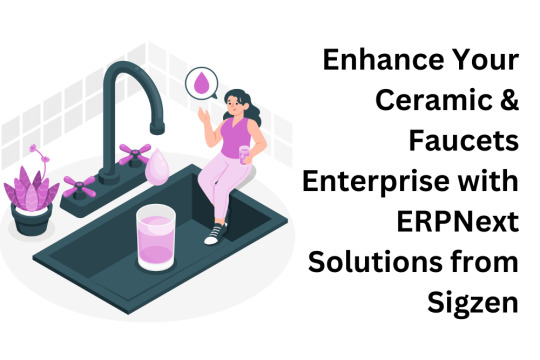#Production planning
Explore tagged Tumblr posts
Text
How Bluemingo Transforms Production Planning and Scheduling for Maximum Efficiency

In a highly competitive manufacturing environment, effective production planning and production scheduling are essential for maximizing productivity and meeting customer demands. Bluemingo offers innovative, AI-driven solutions tailored to enhance manufacturing processes by optimizing resource allocation, improving order delivery timelines, and driving asset utilization. Here’s a closer look at how Bluemingo’s unique approach can elevate your production planning and production scheduling processes.
Advanced Production Planning and Production Scheduling with Bluemingo
1. Order Booking on Available Lines Across Plants, Processes, and Equipment
- Bluemingo enables manufacturers to book orders across various production lines and facilities, strategically allocating orders based on productivity levels and operational constraints. By using real-time data, Bluemingo determines the optimal lines, processes, and equipment for each order, ensuring efficient use of resources and reducing idle time in production planning and production scheduling.
2. Capacity Balancing Across Processes for Optimal Asset Utilization
- Capacity balancing across processes allows Bluemingo to address bottlenecks and smooth out production flow. By redistributing workloads across available resources, Bluemingo maximizes asset utilization and minimizes the likelihood of production delays. This approach in production planning and production scheduling prevents specific machines or lines from becoming overburdened, which can lead to wear and tear or even operational breakdowns.
Key Results Delivered by Bluemingo’s Production Planning and Production Scheduling Solutions
Bluemingo’s system is designed to drive measurable improvements across several critical production metrics:
- Optimal Loading on Equipment
Orders are loaded onto equipment based on productivity metrics and constraints, maximizing equipment effectiveness through intelligent production planning and production scheduling.
- Optimal Sequencing on Equipment
Bluemingo’s sequencing capabilities ensure that jobs are scheduled in a way that minimizes changeover times, enhancing production speed.
- Promise Delivery Dates
By providing accurate delivery dates, Bluemingo improves customer satisfaction and trust with effective production planning and production scheduling.
- Delivery Date Forecasting
Bluemingo forecasts delivery dates based on real-time capacity and workload, ensuring that production timelines are accurate and achievable.
Key Benefits of Bluemingo’s Production Planning and Production Scheduling Solutions
Bluemingo’s approach to production planning and production scheduling provides an array of tangible benefits for manufacturers:
- Timely Delivery of Orders (On-Time In-Full, OTIF)
With optimized planning, Bluemingo enables companies to deliver on time, meeting customer demands without compromising quality.
- Lower WIP and FG Inventory
Bluemingo reduces work-in-progress (WIP) and finished goods (FG) inventory by optimizing production cycles, minimizing excess inventory, and improving cash flow through strategic production planning and production scheduling.
- High Asset Utilization and Overall Equipment Effectiveness (OEE)
By balancing capacity and enhancing load distribution, Bluemingo ensures assets are fully utilized, boosting overall equipment effectiveness and reducing downtime.
- Precise Delivery Commitments
The accurate delivery date commitments powered by Bluemingo’s forecasting capabilities improve customer relationships and confidence in the manufacturing process.
Transform Your Production Process with Bluemingo
With its cutting-edge technology and data-driven approach, Bluemingo empowers manufacturers to streamline their production planning and production scheduling. By optimizing asset utilization, ensuring on-time delivery, and improving overall production efficiency, Bluemingo is a valuable partner for companies looking to stay ahead in today’s dynamic manufacturing landscape.
Make Bluemingo your choice for smarter, more efficient production planning and production scheduling and watch as your business reaps the rewards of increased productivity, reduced inventory, and improved customer satisfaction.
0 notes
Text
See how industrial models are changing the way we design and make things. This blog looks at why these detailed 3D models are so important. They help us visualize designs better, ensure everything fits perfectly, improve how we talk about projects, and make planning and testing smoother. Find out why these models are key in fields like aerospace and automotive, and how they help in creating great designs.
#Industrial models#Modern design#Aerospace engineering#Automotive design#Precision engineering#3D modeling#Design innovation#Manufacturing processes#Engineering tools#Design excellence#Industrial design#Model making#Production planning#Visual simulations#Engineering models
1 note
·
View note
Text
Optimize Your Ceramic & Faucets Business with ERPNext Solutions by Sigzen
ERPNext offers an ideal solution for businesses in the ceramics and faucets industry, delivering a tailored, robust platform designed to streamline various operational processes. This powerful ERP software facilitates seamless management of inventory, production, sales, and procurement, while also providing comprehensive financial management tools. Its ability to integrate and automate these key…

View On WordPress
#business optimization#Ceramics Industry#Digital Transformation#ERP Software#ERPNext#Faucets Business#Financial Management#Inventory Management#Production Planning#Sales Distribution#Sigzen Technologies
0 notes
Text
Sekwencja działań w procesie tworzenia planu produkcyjnego
Badanie popytu i jego prognozowanie jako fundament sukcesu Podstawowym oraz kluczowym etapem w tworzeniu planu produkcyjnego jest dokładna analiza popytu oraz jego precyzyjne przewidywanie. Zrozumienie potrzeb rynku oraz określenie, jakie produkty są pożądane i w jakim tempie powinny być dostarczane, umożliwia efektywne zaplanowanie procesu produkcyjnego, eliminując ryzyko nadwyżek magazynowych lub ich niedoborów. Prognozowanie sprzedaży, biorące pod uwagę różnorodne czynniki zewnętrzne i wewnętrzne, stanowi podstawę do opracowania wiarygodnego planu produkcji, adekwatnego do faktycznych wymagań rynkowych.
Zarządzanie materiałami produkcyjnymi i dostępem do surowców Efektywne zarządzanie składnikami produkcji, w tym materiałami, urządzeniami oraz personelem, odgrywa istotną rolę w organizacji produkcji. Niezbędne jest ścisłe monitorowanie i kontrolowanie dostępności surowców, by zagwarantować nieprzerwany proces produkcyjny bez zastoju. Planowanie grafiku pracy pracowników musi być również zsynchronizowane z harmonogramem produkcji, by zwiększyć produktywność i minimalizować dodatkowe wydatki związane z pracą w nadgodzinach. Współczesne systemy planowania produkcji umożliwiają giętkie zarządzanie zasobami i ich efektywniejsze wykorzystanie.
Ustalanie planu produkcyjnego za pomocą wizualizacji graficznej Opracowanie szczegółowego planu produkcyjnego jest możliwe dzięki zastosowaniu narzędzi wizualizacji, takich jak diagram Gantta. Umożliwia on graficzne przedstawienie całego cyklu produkcyjnego, wyłanianie etapów krytycznych i śledzenie postępów. Taka przejrzysta prezentacja jest dostępna dzięki systemom APS, które mają za zadanie tworzenie dokładnych modeli procesów produkcyjnych. Diagram Gantta jest niezastąpiony w organizacji przepływu pracy, określaniu priorytetów oraz zarządzaniu zasobami, co prowadzi do lepszej organizacji pracy i bardziej efektywnego wykorzystania czasu.
youtube
#production planning#software#Planowanie produkcji#Analiza popytu#Prognozowanie sprzedaży#Zarządzanie zasobami produkcyjnymi#Dostępność surowców#Harmonogram pracowników#Narzędzia do planowania produkcji#Wykres Gantta#Monitorowanie produkcji#Systemy APS (Advanced Planning and Scheduling)#Youtube
1 note
·
View note
Text
Production Planning and Scheduling Software Solution

Empower your manufacturing operations with ThirdEye AI's advanced production planning and scheduling software. Streamline your processes, optimize resource utilization, and meet customer demands effectively. With cutting-edge algorithms and seamless integration with ERP systems. ThirdEye AI offers a user-friendly solution tailored to your manufacturing needs. Enhance productivity and stay ahead of the competition with ThirdEye AI. Visit: https://third-eye.ai/production-planning/
#Production Planning and Scheduling Software Solution#Production Planning#Production Planning Software Solution#Production Planning Software#ThirdEye AI
0 notes
Text

0 notes
Text
How to Integrate Production Software into Manufacturing Operations?
Integrating production software into your operations is a strategic move to streamline processes, increase efficiency, and boost productivity. This guide focuses on successfully implementing production software within manufacturing operations, offering insights and actionable strategies.

Production Software Integration: An Overview
Integrating production software into manufacturing operations marks a necessary step towards operational excellence. This software automates and optimises production planning, execution, and monitoring, enabling manufacturers to meet their production goals efficiently and effectively.
Assess Your Manufacturing Needs
Before moving onto integration, first understand your specific manufacturing needs. Consider factors like:
Current bottlenecks: Identify areas where your processes lag.
Production goals: Define what success looks like for your operations.
Future growth: Plan for scalability to accommodate business expansion.
Choose the Right Production Software
Selecting the appropriate production software is critical. Look for solutions that offer:
Customizability: The ability to customise the software to fit your unique processes.
Scalability: The capacity to grow with your business.
Integration capabilities: Ensure the software can effectively integrate with your existing systems.
Strategic Implementation of Production Software
The implementation process is important for making sure the software delivers its intended benefits. Follow these steps for a smooth integration:
Develop a clear implementation plan: Outline key milestones, responsibilities, and timelines.
Check system compatibility: Check that the new software integrates well with existing systems.
Data migration: Carefully plan the transfer of data to the new system, ensuring accuracy and integrity.
Train Your Team for Success
The success of production software integration significantly depends on your team's ability to use it effectively. Comprehensive training programs are essential, covering:
Operational training: How to use the software in daily tasks.
Troubleshooting: Basic problem-solving related to the software.
Continuous learning: Encourage ongoing learning to adapt to software updates and improvements.
Monitoring, Evaluating, and Optimising Performance
After integration, continuously monitor the software's performance to ensure it meets your manufacturing needs. Regular evaluations will help identify areas for improvement, allowing you to:
Adjust workflows: Refine processes for better efficiency.
Upgrade software features: Implement updates or additional features to enhance functionality.
Feedback loop: Encourage feedback from users to drive continuous improvement.
A Quick Gig:
Here are some ways to integrate production software into manufacturing operations:
Production planning and scheduling: Software can streamline production planning, scheduling, and coordination.
Advanced planning and scheduling: Software can enhance operational efficiency and eliminate costs.
Factory digitization: Can improve operational processes, planning accuracy, manufacturing efficiency, and inventory levels.
Production process tracking: Can help optimise the manufacturing plan and process.
Maintain visibility: Can facilitate real-time data collection and analysis, which can help monitor operations and react to delays and product defects.
Material requirement planning: Can help businesses manage the production of their products by taking into account the raw materials required to make a product.
Streamlined production management: Can help manufacturers plan, schedule, and track production processes.
Change management: Using manufacturing change requests can improve production processes and the quality of the product delivered to customers.
Supplier relationship management: Can help build and maintain strong relationships with suppliers.
Conclusion: Transform Operations with Production Software
Integrating production software into manufacturing operations can transform your business, leading to increased efficiency, productivity, and competitiveness. This journey requires careful planning, strategic implementation, and ongoing optimization. By following the steps outlined in this guide, manufacturers can not only integrate software effectively but also ensure it delivers lasting benefits, positioning their operations for success in the digital age.
Remember, the goal is not just to implement technology but to leverage it as a tool for operational excellence. With the right approach, production software can be a catalyst for transformation, driving your manufacturing operations to new heights.
0 notes
Text
Production Planning And Scheduling in Manufacturing
Explore advanced production planning and scheduling techniques in manufacturing. Enhance efficiency, reduce lead times, and optimize resource utilization with expert insights.
0 notes
Text
Regardless of the event you are organizing, stage management is crucial, as it involves coordinating and overseeing all the elements of a production or event to ensure everything runs smoothly. Might this be something you want to learn more about? TRINITI Event, your go-to event planner in Hawthorne, California, has you covered!
1 note
·
View note
Text
Production levelling for improved planning
Production levelling helps in smoothing customer demand out over time, and aims at proposing a feasible and steady production schedule and plan. This helps production planning departments and production control in smoothing out peaks and reduces the risk of backlogs, as it creates an overall more realistic an manageable inventory build-up. When done effectively, production levelling takes place…

View On WordPress
0 notes
Text
Scope of Production Planning and Scheduling: Maximizing Efficiency in Modern Manufacturing

Production planning, production scheduling, and supply chain management are critical components of modern manufacturing, ensuring effective resource utilization, smooth processes, and timely delivery commitments. Here’s an in-depth exploration of their scope:
1. Comprehensive Scheduling
A robust production planning process must encompass the entire manufacturing lifecycle. Generating an end-to-end production schedule across all stages helps streamline operations, ensuring no detail is overlooked. A single-step scheduling system enhances visibility and coordination across the supply chain.
2. Production Sequencing
Production scheduling optimizes the sequence of operations for all equipment, ensuring maximum productivity and timely deliveries. By aligning the sequence with multi-level BOMs (Bill of Materials) and material availability, manufacturers can avoid bottlenecks and maintain a smooth supply chain flow.
3. Optimal Capacity Utilization
Production planning balances and synchronizes capacities across various stages to ensure equipment and manpower are used efficiently. By distributing loads optimally based on constraints, manufacturers maximize asset utilization and strengthen supply chain management.
4. Multi-factory Coordination
In scenarios involving multiple factories, production planning becomes essential. It coordinates between facilities producing finished goods in-house and vendor factories managing intermediates or raw materials, ensuring seamless production scheduling and supply chain integration.
5. Realistic Order Promises
Using advanced production planning systems, manufacturers can evaluate current orders, plant capacity, and delivery requests to generate realistic promise dates. This enhances customer satisfaction and strengthens supply chain reliability.
6. Simulation for Planning
Simulating the impact of new orders on existing production schedules in real time is a game-changer. These simulations enable manufacturers to assess "what-if" scenarios, improving production scheduling and proactive supply chain management.
7. Priority Handling
Production planning prioritizes high-priority orders to ensure critical commitments are met without compromising overall efficiency. This capability ensures that production schedules are aligned with business priorities and supply chain objectives.
8. Delivery Forecasting
Accurate delivery forecasts are vital for supply chain management. Production planning tools calculate delivery dates by considering material and capacity constraints, enhancing transparency and improving logistics planning.
9. Managing MTO and MTS Orders
Production systems manage both Make-to-Order (MTO) and Make-to-Stock (MTS) orders effectively. They maintain minimum and maximum inventory levels for MTS products and generate orders based on inventory positions, aligning production scheduling with market demands.
10. Campaign Planning
Campaign planning on multiple equipment, based on shared attributes, reduces inefficiencies caused by frequent changeovers. This enhances production scheduling efficiency and optimizes supply chain operations.
11. Handling Constraints
Modern production planning addresses various constraints, including:
- Routing and equipment loading
- Changeovers
- Maintenance schedules
- Material and manpower availability
This ensures that production scheduling aligns with operational realities and supply chain requirements.
By integrating production planning, production scheduling, and supply chain management, manufacturers can optimize resource allocation, achieve smooth workflows, and fulfill delivery commitments efficiently. As industries evolve, advanced planning systems with real-time simulations will further refine these processes, driving innovation and competitiveness.
0 notes
Text
Explore how industrial models are transforming the design and manufacturing landscape. This blog post delves into the significance of these detailed 3D representations, highlighting their role in enhancing visualization, ensuring precision, improving communication, and streamlining planning and testing processes. Discover how industrial models are crucial in various industries, from aerospace to automotive, and their impact on achieving design excellence.
#Industrial models#Modern design#Aerospace engineering#Automotive design#Precision engineering#3D modeling#Design innovation#Manufacturing processes#Engineering tools#Design excellence#Industrial design#Model making#Production planning#Visual simulations#Engineering models
1 note
·
View note
Text
Enhancing Efficiency: ERP Solutions for Gold & Jewellery Businesses by Sigzen
In the dynamic realm of gold and jewellery businesses, precision and efficiency are indispensable. From sourcing raw materials to delivering exquisite pieces, every step requires seamless coordination and meticulous management. Enter ERPNext – a light of modern efficiency, offering tailored solutions to empower businesses in the gold and jewellery industry. As an expert in ERPNext with real-time…

View On WordPress
#Business Intelligence#Cost Reduction#Efficiency Optimization#ERP Solutions#Goldjewellery Business#Inventory Management#Production Planning#SupplyChain Optimization#Workflow Efficiency
0 notes
Text
ERP Software for Manufacturing
A complete ERP software for production which manages the entire gamut of production and manufacturing processes industry-wide.
#erp software for manufacturin#erp software for manufacturing#manufacturing erp#warehouse management#machine planning processes#production planning#production project management
0 notes